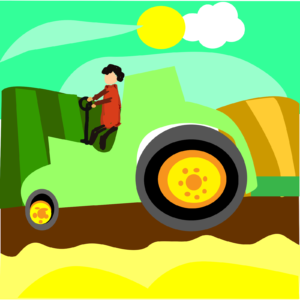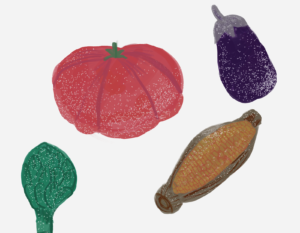Changes in agriculture are not something that we refer to differences between 100 years ago and today’s modernized techniques. Agriculture is a dynamic process. It is changing every day. The changes could be in the form of small decisions by farmers as to where, how and when to cultivate the next crop. The change is happening all over the world due to numerous factors but the most common reasons are –
- Change in ecological factors – Global warming has changed the weather patterns around the world. The crop which was cultivated in rainy season is getting delayed due to late arrival of rains. Similarly, some winter crops are also delayed due to the late arrival of winters or less cold winters. Therefore the cropping seasons have been changing and will keep changing as long as our environment is changing.
- Social factors – The changing economic status of the population also leads to changes in the farming patterns and changes in the types of productivity in a certain area. For example – good economic conditions for the farmers lead to the inclusion of more intensive inputs like heavy machinery, better seeds and irrigation facilities further leading to more productivity.
- Political factors – Market incentives can encourage farmers to intensify the inputs leading to more production. Government policies which induce farmers to grow more change the agricultural scenario in any particular area. Governments in less developed countries provide subsidies to farmers and also introduce debt rebate policies to help farmers, especially those with small land, to be able to not only feed their families but also to reach out to market and sell their produce to earn profit. These changes increase the level of the economic condition of farmer and directly or indirectly leads to changes in agriculture.
How agriculture has changed?
During the ’90s, the availability of arable land was quite significant, as was the number of population involved in farming. However, as the world became more modernized and technologically advanced, the amount of land kept aside for farming purposes saw a steep decline in the population who chose to live the farmer’s life.
According to an estimate, presently 2 percent of the population of the world is involved in agriculture producing food to serve the needs of the world. Food yields have tremendously increased over the last century due to dynamic changes in the lifestyle of the people.
Innovation in technology
Innovation in the field of agriculture picked up the pace after the end of World War II. The dependence on machines increased and highly efficient tractors were now used instead of animals to plough the land, thus saving effort and time. Around 1940 one farmer if one farmer fed 20 people, and with the use of technology, the same farmer was feeding more than 155 people with less time and effort. Even in animal farming the role of technology has made the incubation of eggs, milking of cows, and shearing of wool much easier than before.

Improved plant and animal breeding
Plant and animal breeding has gone through enormous changes over the past 100 years. A single cell can now be used to create hundreds of plantlets and a single cell is also induced to breed animals. An increased focus on diet, nutrition and sheltering prevent diseases which leads to higher yields and more quantity of food and dairy products.
Biotechnology
Seeds are improvised and new animals are hybridized to form new and better generations with the help of biotechnology. Biotechnology has improved the face of agriculture and has made farming a better and more profitable source of income than it was a few decades ago. Even crops are induced to grow better grains and are fortified with many essential nutritional qualities to serve the nutritional need of the population. Also, these new breeds can withstand harsh climatic conditions thus reducing the chances of low outputs. A variety of crops can be planted on the same land resulting in different kinds of foods.
The changes in the field of agriculture are extremely critical for the ever-increasing population of the world.
Case study
The Green Revolution in 1960 turned the face of agriculture. The Green Revolution brought a big change in agriculture in countries like India and Indonesia. High-yield variety of seeds and irrigation techniques were responsible for the increase in the production of crops especially rice even in non-native areas of the country.
Note – The first high-yield rice that was used in the Philippines was IR-8, also known as miracle rice, which doubled the output.
Features of the Green Revolution
- Usage of large amounts of fertilizers for high-yield variety crops.
- Sufficient and controlled water supply is needed.
- Reduction in the growing period from 180 to 100 days.
- Support of government in the form of loans, waivers, advice, awareness and transport facilities for poor farmers
Advantages of the Green Revolution
- Increased production of rice.
- The improved living standard of farmers.
- Improved GDP of the country.
Disadvantages of the Green Revolution
- Irrigation is essential for the growth of HYV crops.
- HYV crops tend to fail to grow properly in alluvial plains.
- These are costly and need more inputs in the form of fertilizer and irrigation.
- Overuse of fertilizers leads to pollution in rivers and lakes.
- HYVs are gradually making pests resistant to fertilizers making them more vulnerable to diseases
Frequently Asked Questions About Changes in Agriculture
How has the Green Revolution transformed agriculture practices, and what are its impacts on food production and sustainability?
The Green Revolution introduced high-yield crop varieties, modern farming techniques, and increased agricultural productivity but also raised concerns about environmental sustainability.
Explain the concept of sustainable agriculture and its principles for balancing food production with environmental conservation.
Sustainable agriculture focuses on practices that minimize environmental impacts, promote soil health, conserve water, and support biodiversity.
How has the shift toward industrialized agriculture affected small-scale farmers and rural communities?
Industrialized agriculture can lead to the consolidation of farms, loss of traditional practices, and challenges for small-scale farmers and rural economies.
Describe the use of biotechnology in modern agriculture, including genetically modified organisms (GMOs), and the associated benefits and controversies.
Biotechnology in agriculture includes GMOs, which can improve crop yields and reduce pesticide use but also raise concerns about environmental and health effects.
What strategies and innovations are being explored to address global food security challenges and reduce food waste?
Strategies include improving distribution, reducing post-harvest losses, investing in crop diversity, and promoting sustainable agriculture to ensure global food security.






